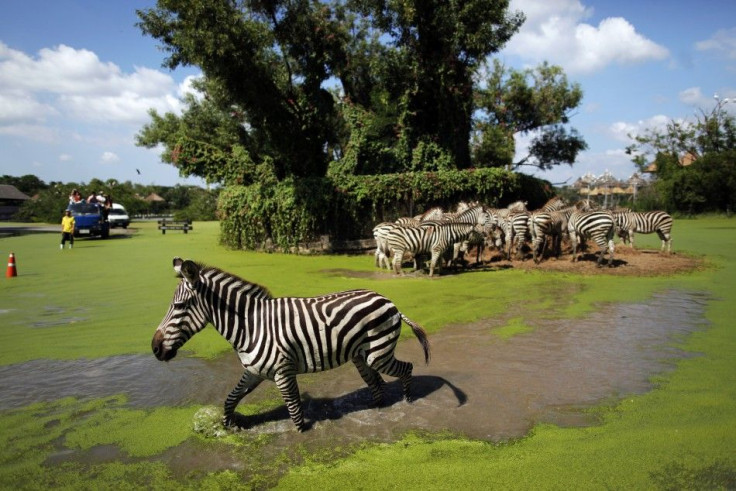Bangkok Flooding 2011: What’s Open and What’s Under Water?

There's so much uncertainty floating around about the 2011 flooding in Bangkok that it's hard for would-be tourists to figure out what the situation is really like.
Thai officials - who've offered a host of statements running the gamut from cataclysmic warnings to friendly assurances -said that concerns in the capital have eased as floodwaters recede further in areas north and east of the city.
Floodwaters in most of Bangkok should recede over the next two weeks if protective barriers hold and no significant volume of water flows toward the city, Governor Sukhumbhand Paribatra said on Sunday.
Thailand's novice Prime Minister Yingluck Shinawatra added that there was a slim chance that the four-month-old flooding crisis would worsen.
Meanwhile, the Foreign and Commonwealth Office changed its advice for holidaymakers to Thailand this week, calling for travelers to simply exercise caution when visiting the country's 22 flood-stricken provinces.
The Tourism Authority of Thailand (TAT) is doing its part to urge travelers to continue with their plans to the flood-stricken nation.
Srisuda Wanapinyosak, Director of Tourism Authority of Thailand's (TAT) U.S. Branch in New York, assured that Thailand is open for business.
Hotels in the unaffected areas of Bangkok maintain a large inventory of supplies, so tourists will be able to get food and bottled water as per usual, Wanapinyosak told the International Business Times.
The TAT director also played down any health risks, saying that health concerns apply only to those who have experienced the effects of being in standing water in flooded areas for prolonged periods.
Tourists who are not in flooding areas will not experience any such health concerns, Wanapinyosak said.
Wanapinyosak wanted to send a strong message to prospective travelers:
Oh behalf of TAT, we're seeking to correct misperceptions about tourist destinations in Thailand, noting that the flooding has mainly impacted the provinces along the Chao Phraya River, including parts of Bangkok and Ayutthaya, but that the vast majority of Thailand's most popular destinations to the north and south have had no flooding whatsoever and remain dry.
Wanapinyosak said it's very important for people to have a clear picture and rest assured that they can plan their trip and know that they will have a world-class experience when they arrive in Thailand.
What's Open and What's Closed?
According to the TAT, the following provinces in the north are not affected by the floods:
Chiang Mai, Phayao, Chiang Rai, Phetchabun, Kampheang Phet, Phrae, Lampang, Sukhothai, Lampun, Tak, Mae Hong Son, Uttaradit, and Nan.
The flooding has subsided in northern provinces including Nakhon Sawan, Phichit, Phitsanulok, and Uthai Thani and cleanup operations are underway.
The following provinces in the northeast are not affected by the floods:
Amnat Charoen, Nong Khai, Buengkan, Roi Et, Buriram, Sakon Nakhon, Chaiyaphum, Si Sa Ket, Loei, Surin, Mukdahan, Ubon Ratchathani, Nakhon Phanom, Udon Thani, Nakhon Ratchasima, Yasothon, and Nong Bua Lam Phu.
The flooding has subsided in northeastern provinces including Kalasin, Khon Kaen, and Maha Sarakham and cleanup operations are underway.
The following provinces in the central area are not affected by the floods:
Chanthaburi, Rayong, Chachoengsao, Samut Prakan, Chon Buri (Pattaya), Samut Songkhram, Kanchanaburi, Sa Kaeo, Phetchaburi (Cha Am), Suphanburi, Prachuap Khiri Khan (Hua Hin), Trat (Ko Chang), and Ratchaburi.
The flooding has subsided in central provinces including Ang Thong and Chai Nat and cleanup operations are underway. Flood waters have also subsided in most areas of the island of Ayutthaya. Tourist attractions in Ayutthaya including the World Heritage Site will reopen once they have been restored.
No provinces in the south were affected by the floods.
The Situation in Bangkok:
In central Bangkok, most businesses, hotels, shops and tourist attractions frequented by the public remain open, including:
Khao San Road, Ratchaprasong (Central World area), Phetchaburi Road, Sathorn, Ploenchit/ Chidlom, Siam Square / MBK / Siam Paragon, Pratunam, Silom/ Surawongse, Rama I Road, Sukhumvit Road/ The Emporium, Rama IV Road, and Yaowarat (Chinatown).
The Tourism Authority of Thailand reports the attractions that are now temporarily closed across the country include Safari World, Dream World, Future Park Rangsit, Central Pinklao, Central Ramindra, Central Ladprao, Fashion Island and the Mall Bang Kae.
Travel Outside of Bangkok:
The closure of Don Mueang airport has had little effect on domestic flights within Bangkok. The two domestic airlines operating from that airport have temporarily switched their operations to Suvarnabhumi, with flights accommodated on a normal schedule.
The State Railway of Thailand (SRT) and inter-provincial bus services are operating as per usual in areas that are not affected by the floods. Inter-provincial buses from Bangkok to southern provinces leave from a temporary station with shuttle services to and from the Southern Bus terminal, also known as Sai Tai Mai. Train services to northeastern Thailand operate as per normal. Train services to the northern provinces operate between Hua Lamphong station in central Bangkok and Chiang Mai. Trains to the north are rerouted around flooded areas.
A search online for hotel rooms at popular Thai resorts shows that numbers are actually up outside of Bangkok as people flee the city. Consequently, it may be difficult to find accommodations in places like Pattaya and Hua Hin. Furthermore, the resorts are reportedly running low on some supplies.
The Situation on the Ground in Thailand:
While many are concerned about getting into and around Thailand, there's a series of potential problems facing travelers once they set foot in the Land of Smiles.
There's a shortage of bottled water, staple foods and items like toilet paper because major supermarkets and wholesale distribution centers are under water. There are also concerns of health and food safety with the waste-filled floodwaters.
For more information and current updates on the flooding situation, travelers can visit www.thailandtourismupdate.com.
READ ALSO: The Best Bangkok Alternatives in Southeast Asia
Thailand Flooding Map Exposes Bigger Problem: Bangkok is Sinking
© Copyright IBTimes 2024. All rights reserved.












